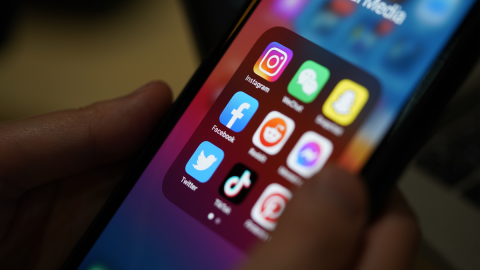If you have set up an account, you can start creating content. Scanning your timeline, you’ll quickly see that people use social networks in different ways:
- Sharing clinical information
- Asking questions/gathering opinions about a current issue or healthcare news
- Building excitement about an event
- Managing customer service
- Streaming a live video interview
- Encouraging support for a campaign
All have merits and the approaches you choose should reflect what you’re trying to achieve in your plan.
How to speak to your audience
Focus on what your audience will find useful and interesting. If you make it valuable, they’ll be more inclined to keep coming back. Thought-provoking posts, written in an engaging tone, and supplemented with good-quality images or video are the most likely to be popular.
Of course, creating your own content takes time, so you may like to supplement this with links to other people’s material.
Ideas on finding content to share
- Check websites with regular physiotherapy news updates, such as the latest news section on the CSP’s website.
- Share interesting posts from those that you follow and add your view on why they’re good.
- Set up notifications with services such as Google Alerts, so that you get a message when something is published on your chosen subject.
Remember to always acknowledge the source of the content.
Five ideas to get you started if you are employed
- Highlight an interesting article on your employer’s website.
- Post a daily tip on how physiotherapy has a role in helping you stay healthy.
- Share a positive insight into your working day.
- Ask your audience to recommend their most useful physiotherapy accounts to follow.
- Say how physiotherapy can help a condition and link it to a CSP case study.
Five ideas to get you started if you are a private practitioner
- Promote some interesting research you’ve just read.
- Highlight a special offer or deal for your patients.
- Create a prize competition that encourages your followers to share your post.
- Share a new physiotherapy tool or app that you’ve discovered.
- Create a poll to gather opinions on a new clinical innovation.
Interaction
Before long, people will respond to your posts and mention you in their own messages.
You can build a relationship if you would like to, and you might want to:
- Thank them for their comment.
- Answer their question, clarify something or continue the discussion.
- Share their comment with your followers.
Sometimes you might receive negative comments. See the ‘professionalism on social media’ section for advice on how best to handle these.
Engaging with others
If you mention people in your posts, include their account names so that they get a notification and may, in turn, start a conversation. On X (formerly Twitter) and Instagram, you can do this by typing an @ in front of their account name in the text of your post (e.g. @thecsp on X (formerly Twitter)).
Helping others share / promote your work
If you run a business, you may decide to include your account name wherever you share your contact details. If you’re employed, ask your employer if it’s appropriate for you to do so.
If you have a website, you can use your chosen network’s tools to add social buttons to your interesting pages. These give readers a simple one-click route to share your work with their own followers.
Live video sharing
All the main social networks offer a method for broadcasting live videos, direct from your phone or connected camera. These offer a cheap and simple way of sharing an event in real-time with your followers, inviting their comments as you go.
You can save these videos for those who weren’t able to make the live event or who want to replay them to their own networks.
Make sure you have consent from anyone featured in your videos before you broadcast them. See the ‘professionalism on social media’ section in this guide for more pointers on staying safe.
If you’re broadcasting live, you’ll want to spend more time upfront thinking about the appropriateness of what will appear. You don’t have the luxury of checking its suitability before pressing the ‘post’ button.
- See the professionalism section in this guide for more pointers on staying safe.
Keeping on top of it all
Regular checking and posting are the best ways to build a following and keep up with what people are sharing.
All networks have tools to help you do this and can be configured to notify you when someone mentions you, marks your post as a favourite, or starts following you. You can quickly review these interactions and decide whether you want to thank them, start a conversation, or perhaps add them to a list for future targeted contact.
With most networks having apps for people on the move, many choose to track what’s going on almost around the clock. If you’re representing a business, you need to decide whether you’re going to offer that level of service or make it clear in your biography the hours that you’re online.



